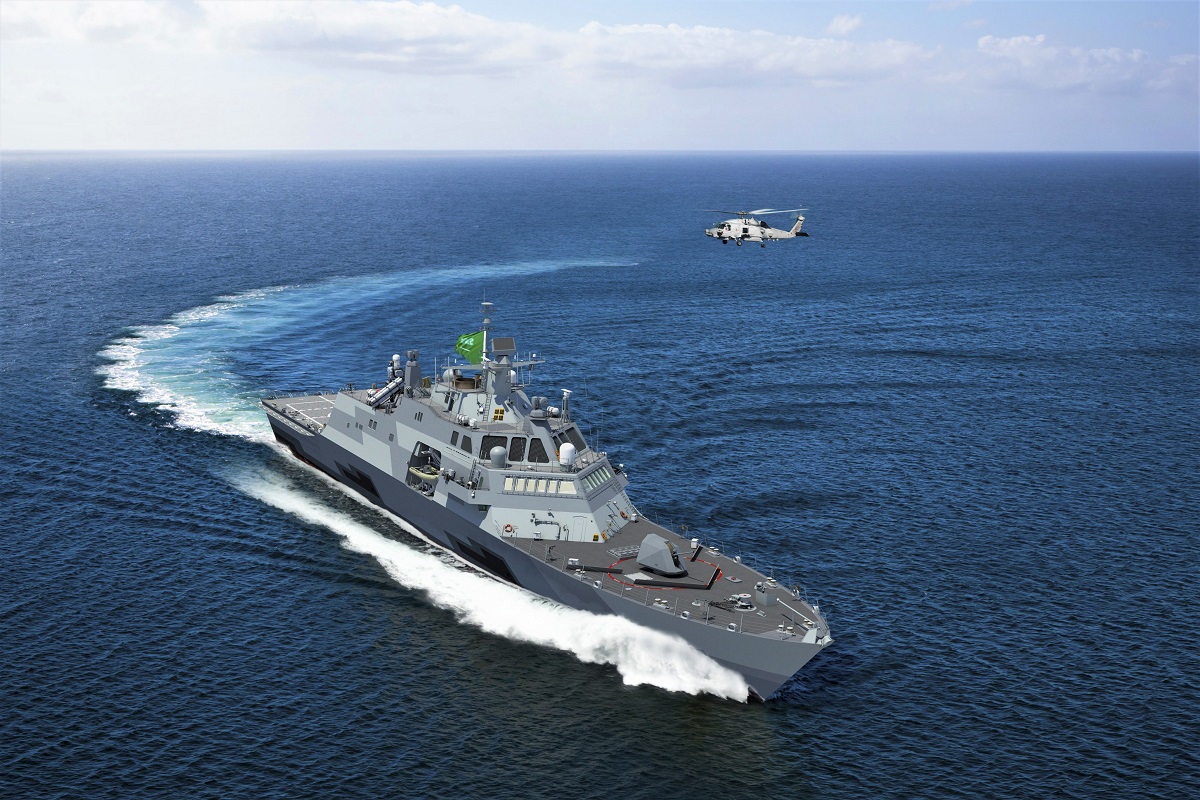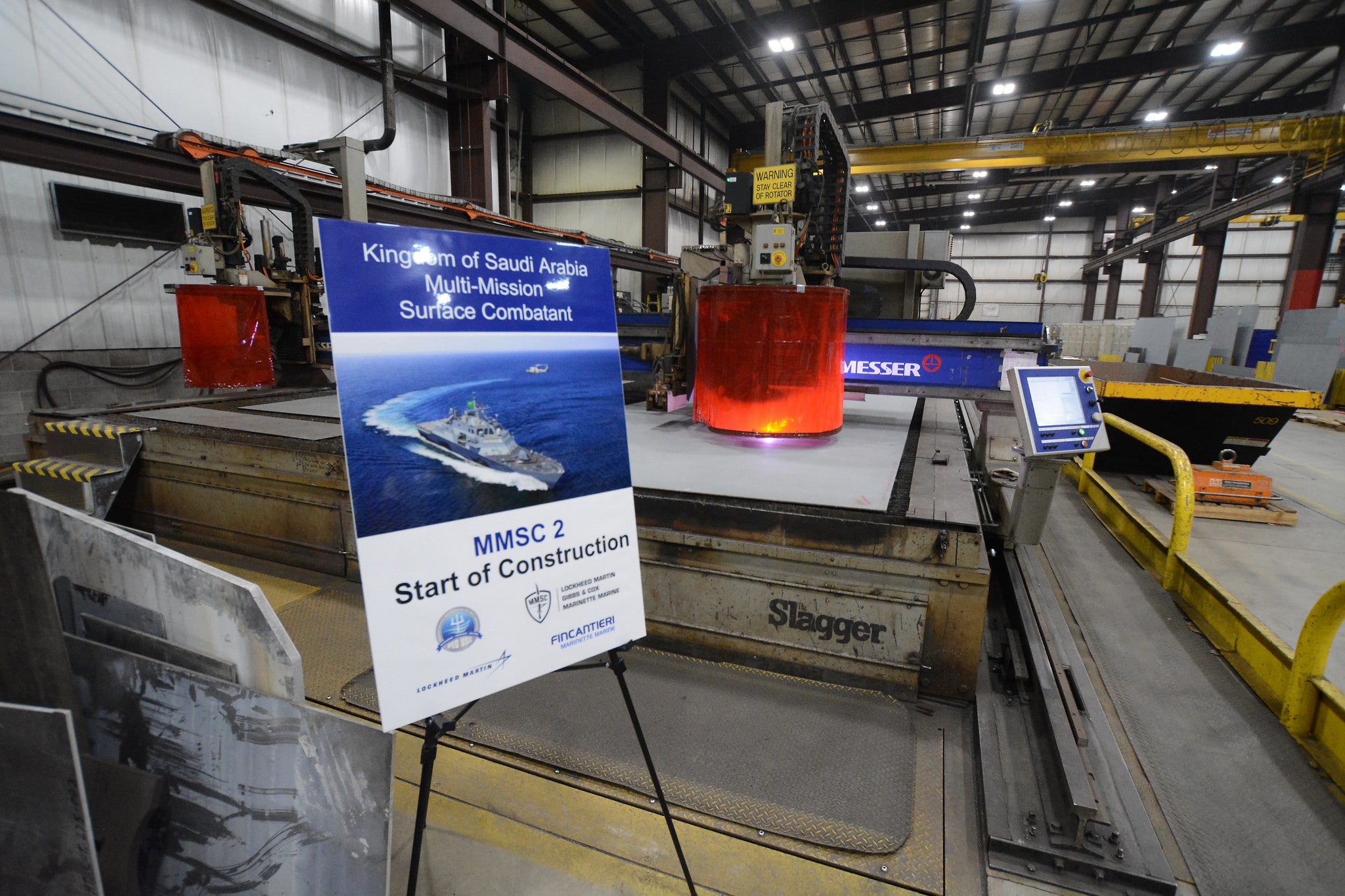"Industry: Potential $20 Billion U.S. Naval Sale to Saudi Arabia Picking Up Steam"
by: Sam LaGrone
February 19, 2015 4:11 PM
Source:
http://news.usni.org/2015/02/19/industry-potential-20-billion-u-s-naval-sale-to-saudi-arabia-picking-up-steam
by: Sam LaGrone
February 19, 2015 4:11 PM
Source:
http://news.usni.org/2015/02/19/industry-potential-20-billion-u-s-naval-sale-to-saudi-arabia-picking-up-steam
The $20 billion dollar recapitalization of Saudi Arabia’s eastern fleet is beginning to pick up steam again after several years of being a dormant U.S. Foreign Military Sales (FMS) program, several U.S. shipbuilding industry officials have told USNI News.
The FMS case for the replacement of the Royal Saudi Navy’s Eastern Fleet of aging American warships – Saudi Naval Expansion Program II (SNEP II) – has been languishing for years as the Saudis and Americans negotiate the requirements for the ships.
But several industry officials have told USNI News there maybe some movement toward finalizing requirements for the ship deal that would be a welcome boon to U.S. shipbuilders faced with tight Pentagon budgets.
“It does seem to me that there seems to be some renewed interest in moving forward and [creating] a more realistic view of requirements that would be more suitable to their navy and the areas that they operate,” Dale P. Bennett, executive vice president of Lockheed Martin’s Mission Systems and Training (MST), told USNI News during an interview on Wednesday.
“I sense things are starting to gel a little bit but nothing concrete, there’s no [Request for Proposal] on the street or anything.”
Other industry sources told USNI News they expect a RFP for the replacement of the Eastern Fleet in the coming months.
Potential movement on the FMS case follows a December contract award for Lockheed Martin MK-41 Vertical Launch Systems (VLS) that included a set-aside for Saudi Arabia in the amount of approximately $93.8 million. The launchers are used to fire missiles from U.S. guided missile cruisers and destroyers, the new Aegis Ashore ballistic missile defense (BMD) installations and in U.S. allied navy ships.
The Saudi’s currently do not use the MK-41 systems in any of their ships.
The U.S. Navy International Program Office (NIPO) did not provide details on the MK-41 sale to USNI News saying the office wouldn’t comment on ongoing FMS cases.
Lockheed, Independence-class Littoral Combat Ship (LCS) builder Austal USA, General Dynamics Bath Iron Works (BIW) and Huntington Ingalls Industries (HII) have all expressed interest in the SNEP II program.
What ships will be needed for the buy have yet to be determined.
“What kind of requirement do they really need given all the other things that they have and have aspirations for and their ability to man the ship and fight the ship?” Bennett said.
“The requirements have been moving around, [It’s been] let’s go to a DDG-51 for awhile, [then] let’s go back to an LCS.”
Lockheed will likely offer a version of the Freedom-class LCS. In response to a question on SNEP II on Wednesday, company officials said they had recently met with unspecified countries to discuss the capabilities of an international Freedom variant.
Austal has previously told USNI News they were interested in the business with a version of the Independence.
USNI News understands that HII is pitching variant of its Legend-class cutter built for the U.S. Coast Guard – billed as a patrol frigate.
In 2011, reports indicated that the Saudis were interested in acquiring Arleigh Burke-class guided missile destroyers (DDG-51), which would make BIW a competitor as well.
The program is not just ships and will likely include improvements to the Saudi Eastern Fleet’s homeport in Jubail on the Persian Gulf.
“This massive purchase could include destroyers, patrol craft, helicopters, ground vehicles and other platforms, as well as warehouses and substantial upgrades to port infrastructure,” read an October U.S. Army Corps of Engineers briefing.


